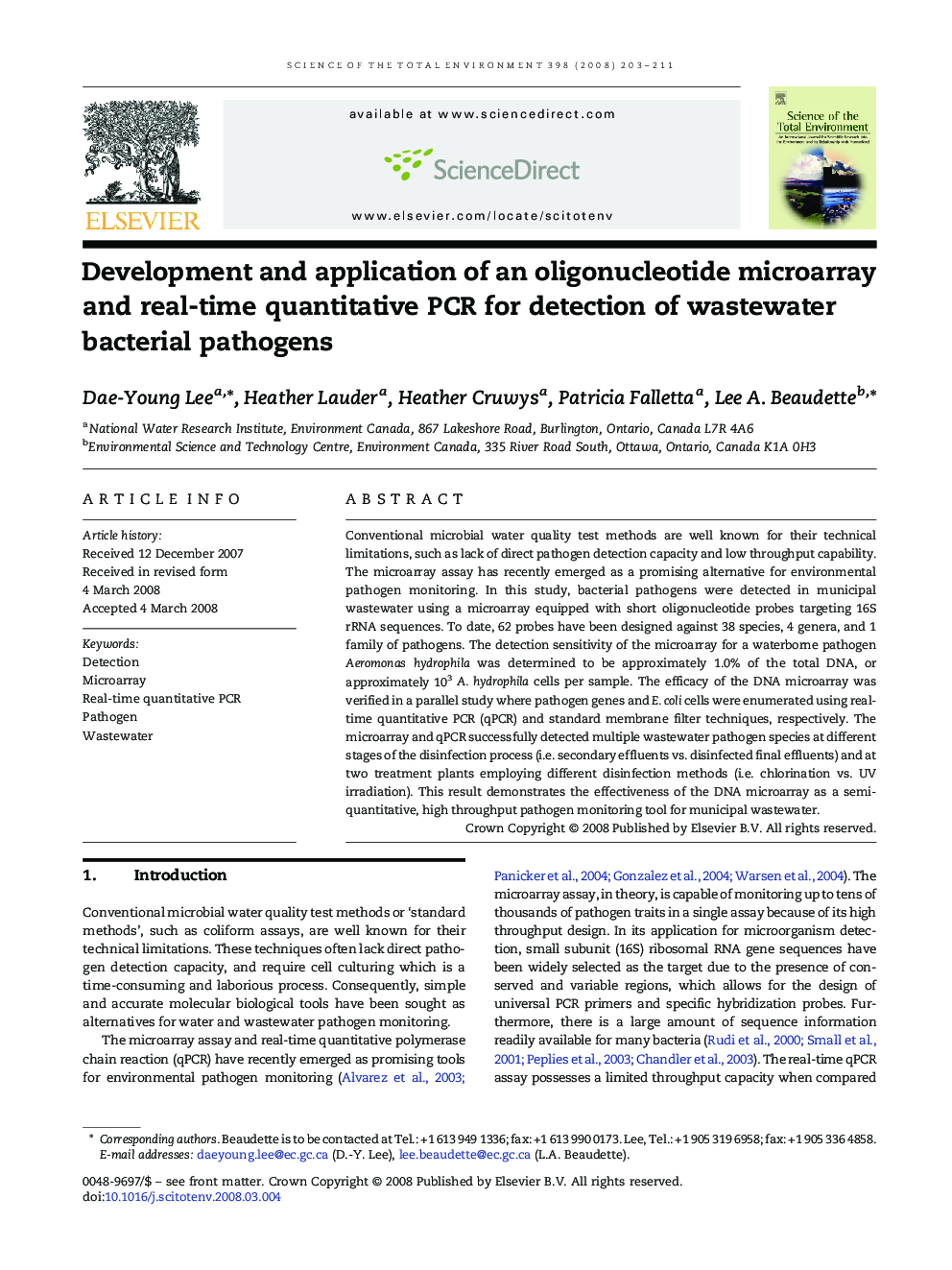| Article ID | Journal | Published Year | Pages | File Type |
|---|---|---|---|---|
| 4432683 | Science of The Total Environment | 2008 | 9 Pages |
Conventional microbial water quality test methods are well known for their technical limitations, such as lack of direct pathogen detection capacity and low throughput capability. The microarray assay has recently emerged as a promising alternative for environmental pathogen monitoring. In this study, bacterial pathogens were detected in municipal wastewater using a microarray equipped with short oligonucleotide probes targeting 16S rRNA sequences. To date, 62 probes have been designed against 38 species, 4 genera, and 1 family of pathogens. The detection sensitivity of the microarray for a waterborne pathogen Aeromonas hydrophila was determined to be approximately 1.0% of the total DNA, or approximately 103A. hydrophila cells per sample. The efficacy of the DNA microarray was verified in a parallel study where pathogen genes and E. coli cells were enumerated using real-time quantitative PCR (qPCR) and standard membrane filter techniques, respectively. The microarray and qPCR successfully detected multiple wastewater pathogen species at different stages of the disinfection process (i.e. secondary effluents vs. disinfected final effluents) and at two treatment plants employing different disinfection methods (i.e. chlorination vs. UV irradiation). This result demonstrates the effectiveness of the DNA microarray as a semi-quantitative, high throughput pathogen monitoring tool for municipal wastewater.
